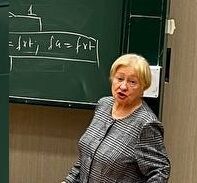Диссертация (1174267), страница 21
Текст из файла (страница 21)
– Vol. 29. – P. 74–80.122108. Ambrosino, N. Chronic respiratory care for neuromuscular diseases inadults / N.Ambrosino, N.Carpenè, M.Gherardi // Eur. Respir. J. – 2009 – Vol. 34. - №.2. – P. 444-451.109. Brady, S.L. Feasibility of instrumental swallowing assessments in patientswith prolonged disordered consciousness while undergoing inpatient rehabilitation /S.L.Brady, T.L.Pape, M.Darragh et al // J. Head Trauma Rehabil. – 2009. – Vol. 24. №. 5. – P. 384-391.110. Lahrmann, H. Expiratory muscle weakness and assisted cough in ALS /H.Lahrmann, M.Wild, F.Zdrahal et al // Amyotroph Lateral Scler.
Other Motor NeuronDisord – 2003. – Vol. 4. - №. 1. – P. 49-51.111. Schwartz, D.E.Death and other complications of emergency airway management in critically ill adults.A prospective investigation of 297 tracheal intubations / D.E.Schwartz, M.A.Matthay,N.H.Cohen //. Anesthesiology – 1995. – Vol. 82. - №. 2. – P. 367-376.112. Astin, J.
Survey of airway management strategies and experience of nonconsultant doctors in intensive care units in the UK / J.Astin, E.C.King, T.Bradley et al// Br. J. Anaesth. – 2012. – Vol. 109. – P. 821–825.113. Martin, L.D. 3,423 emergency tracheal intubations at a university hospital:airway outcomes and complications / Martin LD, Mhyre JM, Shanks AM et al //Anesthesiology – 2011.
– Vol. 114. – P. 42–48.114. Jaber, S. Clinical practice and risk factors for immediate complications ofendotracheal intubation in the intensive care unit: A prospective, multiple-center study*/ S.Jaber, J.Amraoui, J-Y.Lefrant et al // Crit. Care Med. – 2006. – Vol. 34. – P. 2355–2361.115. Cook, T.M. Major complications of airway management in the UK: resultsof the Fourth National Audit Project of the Royal College of Anaesthetists and theDifficult Airway Society.
Part 2: intensive care and emergency departments/T.M.Cook, N.Woodall, J.Harper at al // Br. J. Anaesth. – 2011. – Vol. 106. – P. 632–642.123116. Prys-Roberts, C. Studies of anaesthesia in relation to hypertension II:haemodynamic consequences of induction and endotracheal intubation / C.PrysRoberts, L.Greene, R.Meloche et al // Br. J. Anaesth. – 1971. – Vol. 43.
- №. 6. – P.531-547.117. Bullington, J. The effect of advancing age on the sympathetic response tolaryngoscopy and tracheal intubation / J.Bullington, S.M.M.Perry, J.Rigby et al //Anesthesia and analgesia – 1989. – Vol. 68. - №. 5. – P. 603–608 .118.
Hussmann, B. Prehospital intubation of the moderately injured patient: acause of morbidity? A matched-pairs analysis of 1,200 patients from the DGU TraumaRegistry / B.Hussmann, R.Lefering, C.Waydhas et al // Crit. Care – 2011. – Vol. 15. №. 5. – P. 207 R207.119. Teasdale G. The Glasgow Coma Scale at 40 years: standing the test of time/ Teasdale G, Maas A, Lecky F et al // Lancet. Neurol. – 2014. – Vol.
13. - №. 8. – P.844–854.120. Wijdicks, E.F. Validation of a new coma scale: The FOUR score /E.F.Wijdicks, W.R.Bamlet, B.V.Maramattom et al // Ann. Neurol. – 2005. – Vol. 58. №. 4. – P. 585–593.121. Sessler, C.N. The Richmond Agitation–Sedation Scale / C.N.Sessler, M.S.Gosnell, M.J. Grap et al // Am. J. of Resp. and Criti. Care Med. – 2002.
– Vol. 166. - №.10. – P. 1338-1344.122. Hucharew, H. Profiles of the National Institutes of Health Stroke ScaleItems as a Predictor of Patient Outcome / H.Sucharew, J.Khoury, C.J.Moomaw et al //Stroke. – 2013. – Vol. 44. - №. 8. – P. 2182–2187.123. Hunt, W.E. Surgical risk as related to time of intervention in the repair ofintracranial aneurysms / W.E.Hunt, R.M.Hess // Journal of Neurosurgery – 1968. – Vol.28.
- №. 1. – P. 14–20.124. Hemphill, J.C. 3rd. The ICH score: a simple, reliable grading scale forintracerebral hemorrhage / J.C.Hemphill 3rd, D.C.Bonovich, L.Besmertis et al // Stroke– 2001. – Vol. 32. - №. 4. – P. 891–897.124125. Knaus, W.A. APACHE II: a severity of disease classification system /W.A.Knaus, E.A.Draper, D.P.Wagner // Crit. Care Med.
– 1985. – Vol. 13. - №. 10. –P.818–829.126. Le Gall, J.R. A new Simplified Acute Physiology Score (SAPS II) based ona European/North American multicenter study / J.R.Le Gall, S.Lemeshow, F.Saulnier// JAMA – 1993. – Vol. 270. - №. 24. – P. 2957–2963.127. Vincent, J.L. Use of the SOFA score to assess the incidence of organdysfunction/failure in intensive care units: results of a multicenter, prospective study.Working group on "sepsis-related problems" of the European Society of Intensive CareMedicine / J.L.Vincent, A.de Mendonça, F.Cantraine et al // Crit. Care Med.
– 1998. –Vol. 26. - №. 11. – P. 1793–1800.128. Marshall, J.C. Multiple organ dysfunction score: a reliable descriptor of acomplex clinical outcome / J.C.Marshall, D.J.Cook, N.V.Christou et. al // Crit. CareMed. – 1995. – Vol. 23. - №. 10. – P. 1638–1652. Review.129.
Murray, J.F. An expanded definition of the adult respiratory distresssyndrome / J.F.Murray, M.A.Matthay, J.M.Luce // Am. Rev. Respir. Dis. – 1988. – Vol.4. - №. 3. – P. 720–723.130. Maas, A.I. Moderate and severe traumatic brain injury in adults / A.I.Maas,N.Stocchetti, R.Bullock // Lancet Neurol. – 2008. – Vol. 7. - №. 8. – P. 728–741131.Hamad, G.G.
Morbid obesity and chronic intra-abdominal hypertension.From Abdominal compartment syndrome / Hamad GG, Peitzman AB, edited by IvaturyRR et al. – Texas: Landes Bioscience. – 2006. - 189-196 p.132. Zia, W.C. Coma and altered consciousness. From: Current clinicalneurology: handbook of neurocritical care. / W.C.Zia, Edited by A.Bhardwaj,M.A.Mirski et al.
- Totowa: Humana Press Inc. - 2010.133. Lee, K. The NeuroICU book, 2nd edition / K.Lee. - New York: McGrawHill Medical. - 2017. – P. 739-740.134. Gibson, R.L. Actual tracheal oxygen concentrations with commonly usedoxygen equipment / R.L.Gibson, P.B.Comer, R.W.Beckham et al // Anesthesiology –1976. – Vol. 44. - №. 1. – P.
71–73.125135. Centers for Disease Control and Prevention. CDC/NHSN SurveillanceDefinitions for Specific Types of Infections. [электронный ресурс] – 2016. – режимдоступа: https://www.cdc.gov/nhsn/PDFs/pscManual/17pscNosInfDef_current.pdf.136. HoranTC.CDC/NHSN surveillance definitionofhealthcare-associated infection and criteria for specifictypes of infections in the acute care setting /T.C.Horan, M.Andrus, M.A.Dudeck // Am.
J. Infect. Control – 2008. – Vol. 36. - №. 5.– P. 309–332.137. Esposito, S. Sepsis and septic shock: New definitions, new diagnostic andtherapeutic approaches / S.Esposito, G.De Simone, F.De Caro et al // J. Glob.Antimicrob Resist. – 2017. – Vol. 22. – P. 2213–7165.138. Chesnut, R.M. The role of secondary brain injury in determining outcomefrom severe head injury / R.M.Chesnut, L.F.Marshall, M.R.Klauber et al // J. Trauma –1993. – Vol. 34. – P.
216–222.139. Lahiri, S. Mechanical Ventilation for Acute Stroke: A Multi-statePopulation-Based Study / S.Lahiri, S.A.Mayer, M.E.Fink et al // Neurocrit Care – 2015.– Vol. 23. - №. 1. – P. 28–32.140. Hill, N.S. Neuromuscular Disease in Respiratory and Critical CareMedicine / N.S.Hill // Respiratory Care – 2006.
– Vol. 51. - №. 9. – P. 1065–1071.141. Sahni, A.S. Respiratory Care in Neuromuscular Diseases / A.S.Sahni,L.Wolfe // Respir. Care – 2018. – Vol. 63. - №. 5. – P. 601-608.142. Pikus, L. Videofluoroscopic studies of swallowing dysfunction and therelative risk of pneumonia / L.Pikus, M.S.Levine, Y.X.Yang et al // AJR Am. J.Roentgenol – 2003. – Vol. 180.
– P. 1613–1616.143. Logemann, J.A. Evaluation and treatment of swallowing disorders /J.A.Logemann. – San Diego, CA: College-Hill Press, 1983. – ? p.144. Younga, N. Ventilatory strategies for patients with acute brain injury /N.Younga, J.Rhodesa, L.Masciab et al // Current Opinion in Critical Care – 2010. –Vol. 16. – P. 45–52.145. Schönenberger, S. Early tracheostomy in ventilatedstroke patients: Study protocol of the international multicentre126randomized trial SETPOINT2 (Stroke-related Early Tracheostomyvs.
Prolonged Orotracheal Intubation in Neurocritical care Trial 2) / S.Schönenberger,W.D.Niesen, H.Fuhrer et al // International Journal of Stroke – 2016. – Vol. 11. - №. 3.– P. 368–379.146. van den Berg, B. Clinical outcome of Guillain-Barré syndrome afterprolonged mechanical ventilation / B.van den Berg, E.F.Storm, M.J.P.Garssen et al // J.Neurol. Neurosurg. Psychiatry – 2018. – Vol. 89. - №. 9.
– P. 949–954.147. Heiss, W.D. Malignant MCA Infarction: Pathophysiology and Imaging forEarly Diagnosis and Management Decisions / W.D.Heiss // Cerebrovasc Dis. – 2016. –Vol. 41. - №. 1–2. – P. 1–7.148. Smith, C.H. Incidence and patient characteristics associated with silentaspiration in the acute care setting / C.H.Smith, J.A.Logemann, L.A.Colangelo et al //Dysphagia – 1999. – Vol. 14. – P. 1–7.149. Hacke, W. ATLANTIS Trials Investigators; ECASS Trials Investigators;NINDS rt-PA Study Group Investigators. Association of outcome with early stroketreatment: pooled analysis of ATLANTIS, ECASS, and NINDS rt-PA stroke trials.
/W.Hacke, G.Donnan, C.Fieschi et al // Lancet – 2004. – Vol. 363. – P. 768–774..
















